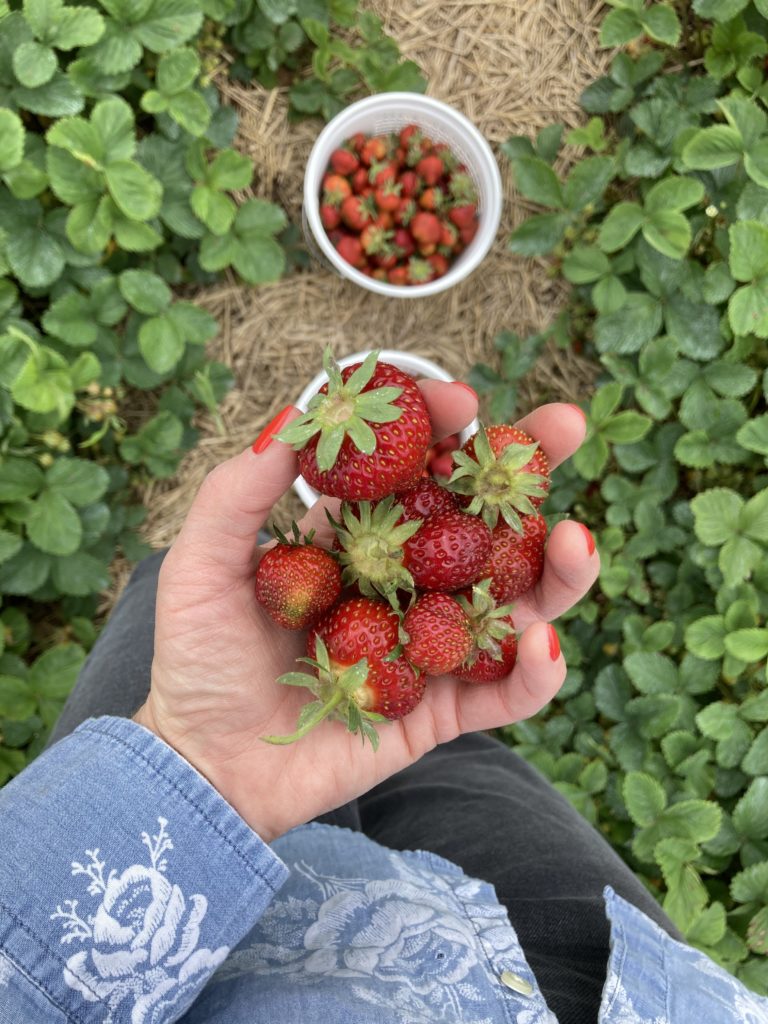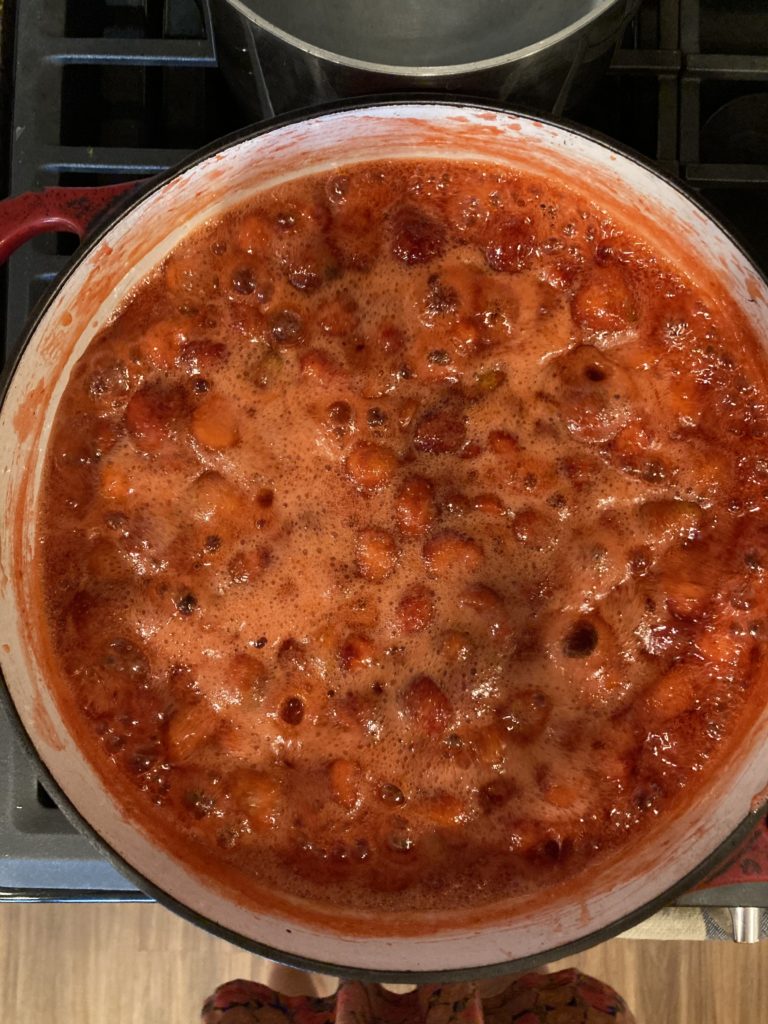Alright, I will come clean. This space is mainly for me, keeping track of recipes that I love and need to have written down. I drafted this post a few weeks ago, and in the time between, my grandma has passed. Writing that is hard. I read my post below, seeing my present verbs, as if she is still here. Well, she is – in my heart and mind! Her legacy, and many amazing recipes, will endure. So, I’m not changing it.

Barbara Kingsolver notes in her book Animal, Vegetable, Miracle that Americans have no a lack of food culture, rather we have adopted bits and pieces from other well established culinary cultures, and this has been part of our industrialized food-fueled demise. For sure, America’s industrialized food system and our global economy at large have both encouraged and obliterated aspects of sharing food, preparing food, ingesting nutritionally dense food, diversity in agriculture (plants and animals), and retaining food traditions. With that said, I encourage you to explore the microcosm of your family’s recipes and food traditions. If you cannot find any, start today and make them!
It has been a few years since I have made strawberry jam. Or picked strawberries. Both traditions in my family when June rolls around. This year, I declared that I would pick strawberries – so I did. On my birthday. And it was fantastic. I restrained myself and only picked about 7lbs. But mark my words, when we have more space and a chest freezer, I’ll be squirreling away way more.

My grandma’s strawberry jam is the best. I cannot recall a time in my life growing up when we didn’t have strawberry jam on hand. The simple joy of biting into a freshly baked homemade “grandma” bun, smeared with a healthy amount of room temperature butter (she always had some on the counter, by the toaser) and strawberry jam, was one of life’s best treats. I have many memories of toasting and enjoying these buns with my cousins, in grandma’s kitchen. I typically now use homemade sourdough bread as the butter and jam vehicle now.
Growing up, there was also elderberry syrup – ideal for pancakes, canned peaches – I always liked those plain, but my sister ate them with cottage cheese, pickles – both sweet and dill, tomatoes – perhaps some of the more epic canning days with grandma…so many preserved goods that were so…..good. I realize now, and more and more as the world relies on industrialized food systems (which aren’t all bad, btw), how lucky we were to have exposure to the art of preserving our own food while growing up in a largely rural farm setting. I think it is something that helps cultivate respect for food resources. If you take the time to preserve food, you are of a certain character, and I respect that.
I have made strawberry jam with my grandma a few times. I recall her asbestos hands, reaching into boiling (yes, boiling) water to retrieve the can lids, to place on the jars, and then having me put on the jar bands and tighten them – as they were full with hot-ass jam, ready to go into the canner. I am not ashamed to say that I used a towel to hold the hot jars, and also that my grandma is a badass.
This year, I had to freeze my berries, since I didn’t have the time to make jam with them right after picking. Denis and I hulled and quartered the berries, and froze them in 2lb portions. A few weeks later, I was wondering how I would handle them to make jam since I’ve only ever used fresh, and found the internet to be wildly unhelpful, so am documenting my method in case you also don’t find the advice you need. Honestly, I probably should have just called my grandma and asked her.
Since I did not mash my berries before freezing (which you could do, and I am pretty sure this is something my grandma did – so note to 2023 Annaliese when making strawberry jam to do this), I allowed them to thaw at room temp until mashable. Not entirely thawed, since I didn’t want the berries to be disproportionately juicy (we’re not after strawberry jelly, folks!). I needed 5 cups of well-mashed strawberries for 1 recipe of jam, which yields 8 half pint jars.
I then proceeded with the recipe, which is (shocker) the one you’ll find in the little pamphlet inside the Sure-Jell box. It’s identical (and probably the one she used) to my grandma’s – she even adds the butter anti-foam. She does add one more secret ingredient, which I will not disclose here. Some family secrets are worth keeping as IP. This one is for you, grandma!

PSA: I think it is my duty as a food scientist to say – please follow canning instructions from reputable sources. When in doubt, consult your state health or agricultural department’s website on questions regarding recipes or how to safety and properly preserve produce. Don’t fuck around with non-tested canning recipes from dubious sources (most of the internet), especially low-acid foods. Do not use expired lids or re-use lids, as the sealant will not form a hermetic seal with jars. Do not use chipped or cracked jars, and do not use jars not intended for canning purposes. This all goes contrary to what my grandma likely did over the decades she made jam, but my duty as a food professional endures! Also, this is not a low-sugar jam. If you want a lower sugar jam, you must seek out low-methoxyl pectin (Pomona pectin is a good source).
Strawberry Jam // makes 8 half pints // recipe from Grandma
- 5 cups hulled fully ripe strawberries, smashed (you need 5 cups smashed fruit, so about 8 cups strawberries to begin with)
- 1 box sure-jell pectin (high-methoxyl pectin)
- 1/2 tsp butter (for anti-foam)
- 7 cups sugar
- Juice 1/2 lemon (optional)
- Begin with sterile jars and lids. You can wash your jars and lids in the dishwasher or with soapy water, then place in a solution of bleach. Allow to air-dry.
- Place jar lids in a small pot, and bring to a gentle boil. The lids need to be warm so the sealant is pliable and forms a hermetic seal with the jar.
- Prepare canner or a very large pot (that has a lid) with a rack at the bottom. Add water to canner to fill half-way, and begin to heat water to a simmer as you proceed with the recipe.
- Measure the strawberries into a large pot, the one you will cook the jam in.
- Measure sugar in a large bowl and set aside.
- Add pectin to the smashed strawberries in the pot and stir to combine until no pectin remains visible.
- Heat strawberry-pectin mixture to a full boil (a boil that does not stop when stirred).
- Add the sugar, and bring back to a full boil, stirring constantly, and cook for 1 minute.
- After 1 minute, off the heat, and ladle the jam into the prepared sterilized jars. Wipe the jar mouths and threads of any jam spills, apply lids, and then screw on the lid rings until they are hand-tight.
- Add filled jars to the canner, add hot water as needed to cover jars by 1 to 2 inches. Cover the canner. Bring to a gentle boil, and cook for 10 minutes.
- After 10 minutes, off the heat, and take jars out of canner. Allow jars to sit, undisturbed, until fully cool.
- Check seals once cooled by pressing the center of lids with a finger. If jars did not seal, then re-process or refrigerate the jam for the entire shelf life. If properly processed, the jam will keep in a dark, room temperature location for 1 year. Once opened, store in the fridge.

